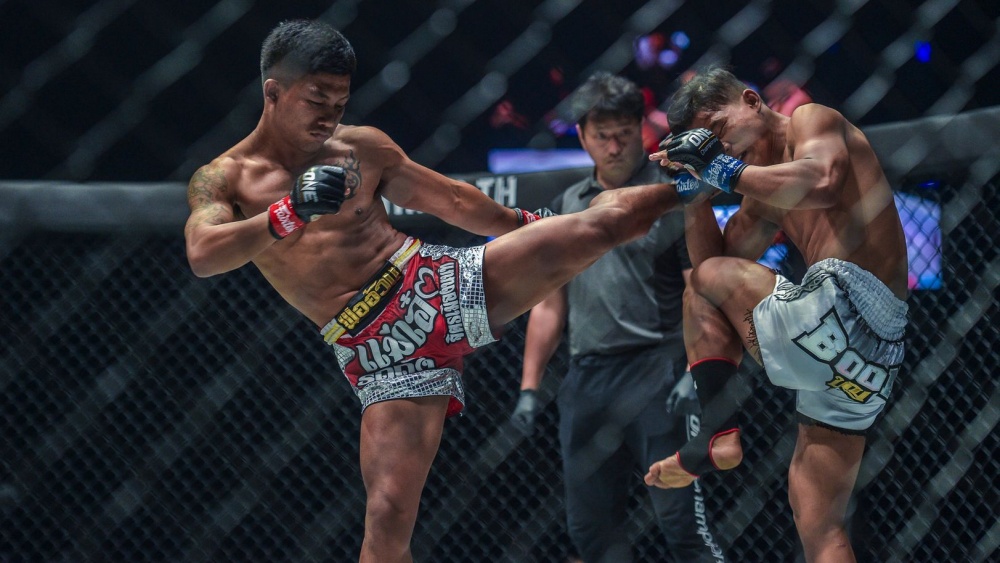Muay Thai is well known worldwide because the artwork of eight limbs, however inside its lengthy historical past are conventional regional types that formed the game as we all know it at the moment. Amongst these is Muay Thasao, a method rooted in Northern Thailand. Recognized for its velocity and fluidity, Muay Thasao contrasts with the power-based approaches of different regional types. At the moment, many martial arts gyms are widespread coaching grounds, and studying about Muay Thasao offers practitioners and fanatics a deeper appreciation of the variety inside Muay Thai.
Origins Of Muay Thasao
Muay Thasao comes from the northern areas of Thailand, significantly in areas influenced by the traditional Lan Na Kingdom. The type developed throughout a time when hand-to-hand fight was a part of each army coaching and cultural custom. Whereas some Muay Thai types centered on sheer energy, Muay Thasao emphasised velocity, agility, and motion.
The identify “Thasao” refers back to the Nan Province, typically credited because the birthplace of this method. Fighters from the north gained a popularity for being fast on their ft and sharp of their strikes. This id formed the northern type into one which prioritized fast combos and evasive methods over brute power.
Distinctive Traits
Muay Thasao is usually known as the type of velocity. Fighters skilled on this custom use fast footwork, fluid head motion, and quick putting combos. The place different types might depend on standing agency and buying and selling blows, Muay Thasao fighters want to outmaneuver their opponents.
One hallmark is its emphasis on unpredictability. Fighters change rhythm continuously, mixing brief bursts of aggression with sudden retreats. This makes them troublesome to learn and forces opponents to combat on unfamiliar phrases. One other key ingredient is using intelligent angles. Moderately than transferring straight in, Muay Thasao practitioners reduce diagonally, touchdown strikes whereas avoiding counters.
Comparability With Different Types
To grasp Muay Thasao’s place in historical past, it helps to check it with the opposite regional Muay Thai types.
Muay Korat from the northeast is thought for uncooked energy, with fighters delivering heavy strikes.
Muay Lopburi emphasizes technical finesse, particularly sharp punches and feints.
Muay Chaiya from the south is famend for protection and counterattacks.
In opposition to these, Muay Thasao stands out because the type of velocity and agility. Whereas Muay Korat fighters may overwhelm with energy, and Muay Chaiya fighters frustrate with tight defenses, Muay Thasao fighters thrive on rhythm modifications and quick assaults. This made them extremely revered in historic competitions and cultural festivals.
Cultural And Historic Significance
Muay Thasao was not solely a combating type but additionally a mirrored image of northern Thai tradition. The Lan Na Kingdom positioned significance on mobility and technique, which influenced the way in which fight was practiced. Fighters skilled in each armed and unarmed methods, with Muay Thasao representing the unarmed method that mirrored battlefield techniques.
Over time, as Thailand unified and Muay Thai grew to become extra standardized, the distinctions between regional types blurred. Nevertheless, the legacy of Muay Thasao lives on within the rules of velocity and agility that fashionable fighters nonetheless admire. Historic information and oral traditions from the north hold the id of Muay Thasao alive, reminding practitioners of the various roots of the artwork.
Affect On Fashionable Muay Thai

Muay Thasao’s legacy lives on in fashionable Muay Thai, inspiring fighters to worth velocity, footwork, and adaptableness alongside energy.
Although fashionable Muay Thai doesn’t strictly divide fighters into regional types, the affect of Muay Thasao can nonetheless be seen within the sport at the moment. Fighters who emphasize velocity, footwork, and rhythm owe a lot to the northern custom. Many champions are praised for his or her potential to adapt shortly, transfer fluidly, and hold opponents off steadiness, all of that are traits central to Muay Thasao.
In coaching, drills that spotlight fast entries, quick exits, and mixture putting mirror the identical philosophy. In Singapore, martial arts gyms typically educate Muay Thai in a blended manner, however college students are inspired to check the historical past behind the methods. Studying about Muay Thasao evokes practitioners to method their coaching with an appreciation for velocity and intelligence, not simply energy.
Classes From Muay Thasao
The historical past of Muay Thasao carries classes that stay related for at the moment’s martial artists.
Adaptability: Fighters should be taught to regulate rhythm and technique, not simply depend on energy.
Effectivity: Fast, sharp strikes preserve vitality whereas protecting stress on the opponent.
Motion: Staying mild on the ft creates alternatives and prevents predictability.
Mindset: The philosophy of Muay Thasao emphasizes being intelligent, composed, and resourceful in each trade.
These classes present that martial arts isn’t just about bodily potential but additionally about technique and intelligence.
Conclusion
Muay Thasao is a reminder that Muay Thai isn’t a single type however a set of traditions formed by completely different areas of Thailand. The northern type, identified for its velocity and unpredictability, supplied a counterpoint to the ability, protection, and method emphasised in different areas.
At the moment, despite the fact that regional divisions are much less pronounced, the rules of Muay Thasao reside on in the way in which fighters transfer, strike, and adapt. For practitioners in Singapore and internationally, understanding the historical past of Muay Thasao supplies perception into how the artwork of eight limbs developed and why agility and rhythm stay simply as essential as energy.
You may additionally like:
Most Efficient Strategies Inside The Muay Thai Clinch
















